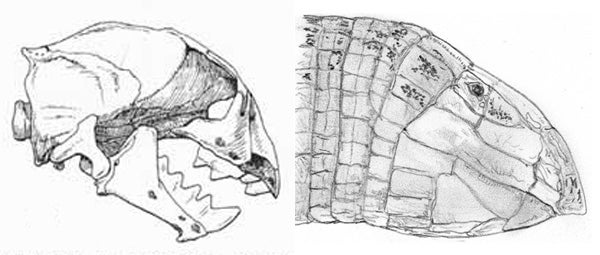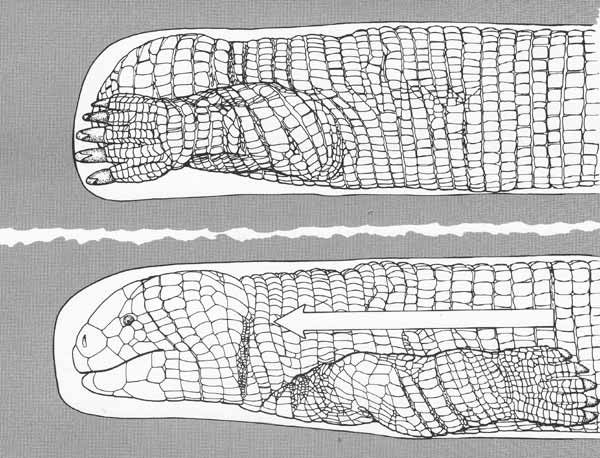This article was published in Scientific American’s former blog network and reflects the views of the author, not necessarily those of Scientific American
All extant amphisbaenians – the weird, burrowing squamates often vernacularly termed worm-lizards – are predators that prey on arthropods, worms and small vertebrates. They catch animals in tunnels, often immobilising prey by holding them against a tunnel wall with a curve of the body.

At left: the formidable, short-faced, acrodont skull of the trogonophid amphisbaenian Agamodon. At right: portrait of Zarudny's worm lizard Diplometopon zarudnyi, a trogonophid amphisbaenian. from the Arabian Peninsula. Credit: Gans 1974, Darren Naish
Some amphisbaenians – among them the large South American Amphisbaena species – take surprisingly large prey and regularly kill other reptiles as well as rodents. When hunting such surface-dwelling prey, the amphisbaenian lunges forward with its mouth open, grasping the prey with a powerful bite and dragging it underground or tearing a chunk from its body, sometimes by powerfully twisting as it withdraws. Amphisbaenians return to disabled or deceased prey and it has been suggested that they may scavenge from dead bodies lying on the surface.
On supporting science journalism
If you're enjoying this article, consider supporting our award-winning journalism by subscribing. By purchasing a subscription you are helping to ensure the future of impactful stories about the discoveries and ideas shaping our world today.

I love this illustration, of a digging Bipes, from Carl Gans' book on biomechanics. It's a nice illustration of how weird and perhaps frightening a limbed amphisbaenian might look if made huge. Credit: Gans 1974.
And herein we find the inspiration for the giant Graboidus and small land-candirus of the Squamozoic.
Amphisbaenians have been mentioned a few times on Tet Zoo before. See...
Ref - -